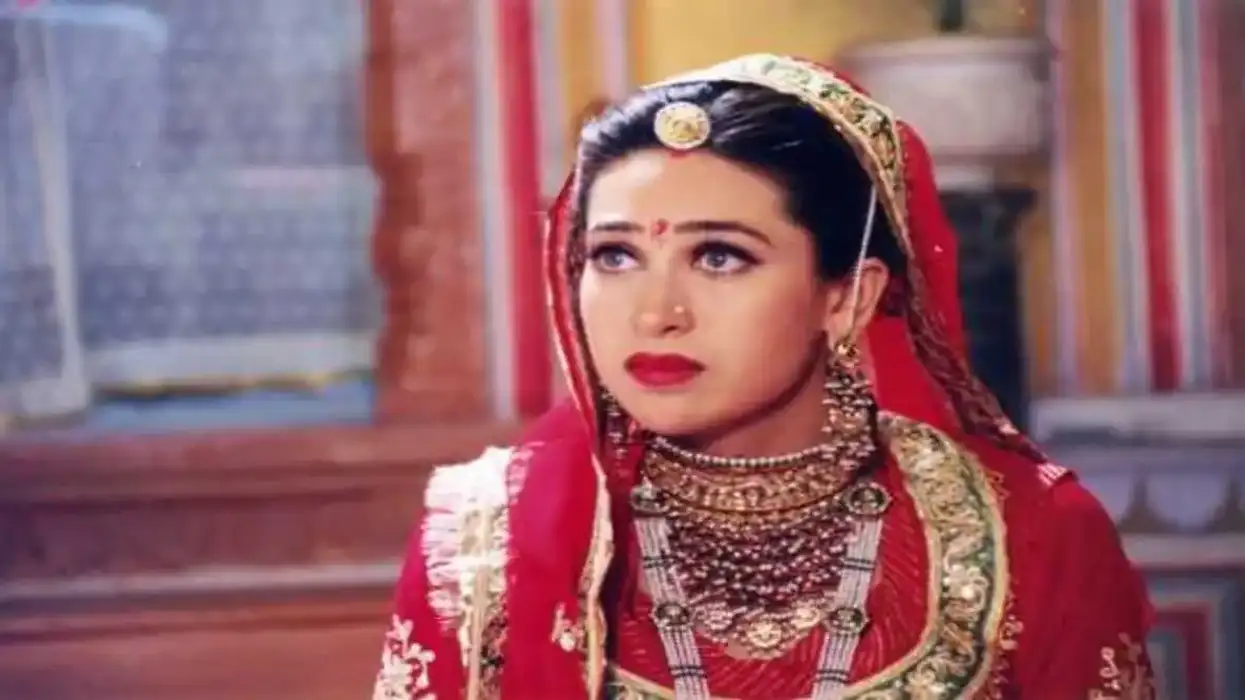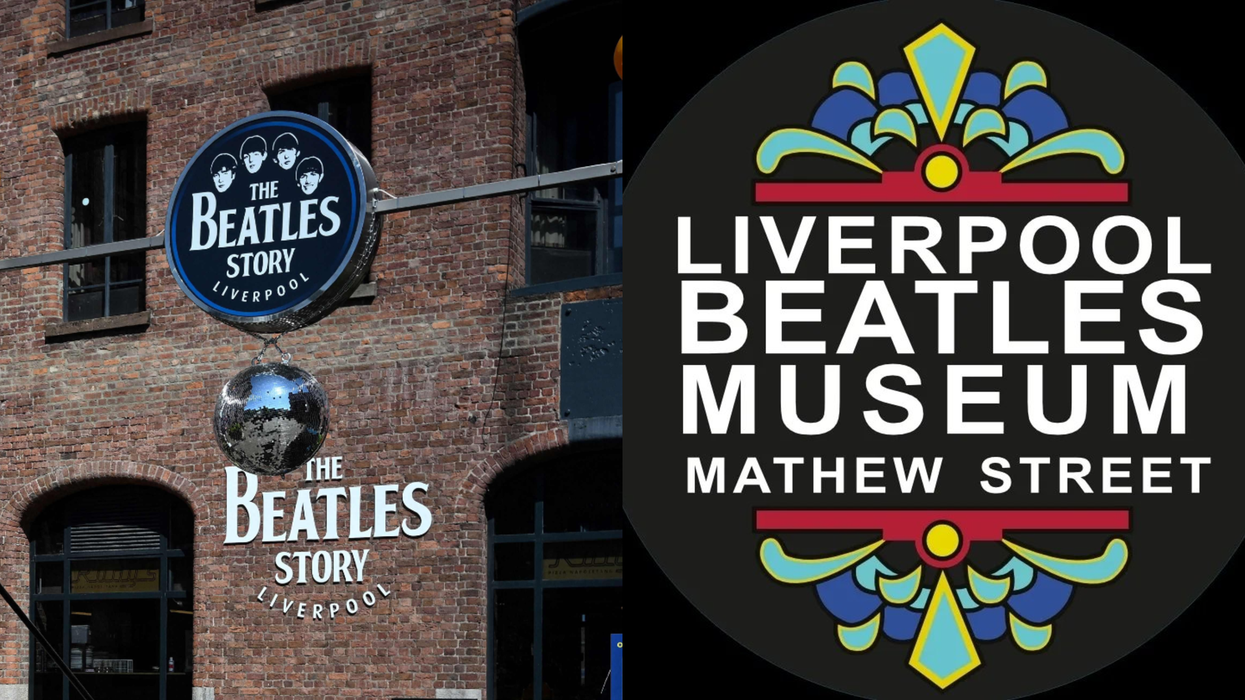SHE may have slowed down dramatically in the past two decades to concentrate on family life, but that doesn’t take away from the remarkable achievements of Karisma Kapoor.
From breaking ground for women in her famous family to starring in successful Bollywood films and inspiring her superstar younger sister Kareeena Kapoor Khan, she has left a permanent mark on the cinematic landscape.
The actress turns a year older this week and celebrates her milestone 50th birthday next Tuesday (25). Eastern Eye decided to mark the occasion by presenting 50 facts connected to her.
- The eldest daughter of Bollywood stars Randhir Kapoor and Babita, Karisma Kapoor was born in the Indian city of Mumbai and grew up surrounded by the film industry.
- Her famous relatives include Prithviraj Kapoor (great-grandfather), Raj Kapoor (grandfather), Shammi Kapoor (grand-uncle), Shashi Kapoor (grand-uncle), Rishi Kapoor (uncle), Ranbir Kapoor (cousin) and of course, her younger sister Kareena Kapoor Khan.
- Karisma’s maternal grandfather was noted character actor Hari Shivdasani.
Her nickname Lolo was inspired by Italian cinema icon Gina Lollobrigida and given to the actress by her mother Babita. It is also said to be inspired by a sweet treat, called loli in Sindhi.
- Karisma and Kareena were single-handedly raised by their mother Babita in humble surroundings after she separated from their father.
- She was inspired to pursue acting by popular leading ladies Madhuri Dixit and Sridevi. She would copy all their dance songs growing up.
- The actress reportedly left college to financially support her family.
- She became the first female in four generations of her famous family to pursue an acting career and made a big screen debut with 1991 romantic drama Prem Qaidi, which was a remake of 1990 Telugu film Prema Khaidi.
- After a few flops, the actress scored her first hit film in 1991 with Jigar, opposite Ajay Devgn, inspired by Hollywood film Kickboxer (1989).
10.Popular south Indian star Venkatesh made his Hindi language debut opposite Karisma in successful 1993 film Anari, which was a remake of Tamil romantic drama Chinna Thambi (1991). Venkatesh had reprised his role from the Telugu remake Chanti (1992).
11.The growing popularity of Karisma was such that she had nine films released in 1994, with acclaimed comedies Raja Babu and Andaz Apna Apna being the most successful.
12.Karisma revealed that at one point the four lead actors – Salman Khan, Aamir Khan, Raveena Tandon and herself – were not on talking terms with each other during the making of Andaz Apna Apna. She said: “This cult film was made with all of us not even speaking to each other. It’s quite funny”.
13.Her movie Khuddar (1994) was a remake of Tamil film Walter Vetrivel (1993). The film’s dialogues became so popular that they were released on audio cassettes. The film’s song Sexy Sexy Mujhe Log Bole was censored to Baby Baby Mujhe Log Bole.
14.Her film Suhaag (1994) successfully brought actors Akshay Kumar and Ajay Devgn on screen together for the very first time.
15.Her superhit comedy Coolie No 1 (1995) was a remake of 1993 Tamil film Chinna Mapillai. There was later an unsuccessful remake of the film in 2020 with the same director and Sara Ali Khan taking on Karisma’s role.
16.Karisma had 10 movies released in 1996, with the year’s biggest hit Raja Hindustani being the most successful.
17.Her blockbuster hit Raja Hindustani (1996) was inspired by classic Bollywood film Jab Jab Phool Khile (1965). It was the highest grossing film of that year and fourth most successful of the 1990s. Juhi Chawla claims to have rejected the role Karisma played.
18.Raja Hindustani featured a record-breaking long on-screen kiss between Karisma and co-star Aamir Khan, which would inspire more films to include on-screen smooches.
19.She actually starred in three of the top four Bollywood films of 1996 with Raja Hindustani (1), Jeet (3) and Saajan Chale Sasural (4).
20.The actress feels that Hero No 1 (1997) was a big career turning point because it established her in the commercial space.
21.Karisma only landed the role in Dil To Pagal Hai (1997) after leading ladies including Raveena Tandon, Juhi Chawla, Kajol and Manisha Koirala turned it down. It would become the highest grossing film of that year and win her multiple best supporting actress honours, including a National Award.
22.Karisma had initially refused Dil To Pagal Hai because she was intimidated at dancing alongside her idol Madhuri Dixit. She explained, “My mother told me, ‘You must take up the challenge. You are a big fan of Madhuri Dixit – you must do it. You work hard and you will shine.”
23.Films Karisma turned down included Ishq (1997), Gupt (1997), Judaai (1997) as well as Asoka (2001).
24.She starred in the top two grossing Bollywood films of 1999, with Hum Saath Saath Hain and Biwi No 1.
25.A number of top leading ladies, including Juhi Chawla, Aishwarya Rai, Raveena Tandon and Manisha Koirala rejected the role in Biwi No 1, before Karisma saw the potential and agreed to do it.
26.Her movie Haseena Maan Jaayegi (1999) was also a success. Coincidentally, her mother Babita had starred in a movie with the same title in 1968.
27.Her hit comedy Dulhan Hum Le Jayenge (2000) was inspired by classic Bollywood film Ek Phool Char Kante (1960). It was the first full soundtrack that was composed by Himesh Reshammiya.
28.She was the top-ranked Bollywood actress in 1996, 1997 and 1999.
29.Karisma received multiple best actress awards for her perform mances in Raja Hindustani (1996), Fiza (2000) and Zubeida (2001).
30.Although she played Hrithik Roshan’s elder sister in acclaimed film Fiza, Karisma is actually five months younger than him in real life.
The actress played the title role in Zubeidaa, which also won a National Film Award for best feature film in Hindi and was acclaimed for blurring the lines between commercial and parallel cinema.
32.Producer/director Suneel Darshan had refused to sell the terrestrial rights for her movie Ek Rishtaa: The Bond of Love (2001). It finally had a TV premiere in 2017 on Zee Cinema and garnered huge ratings.
33.Her movie Shakti: The Power (2002) was a remake of Telugu film Anthahpuram (1998), which was inspired by Hollywood drama Not Without My Daughter (1991).
34.Karisma dated Ajay Devgn during her teenage years. She was later engaged to Abhishek Bachchan, but it was called off without explanation a few months later.
35.She then married industrialist Sunjay Kapur on 29 September 2003. The couple had two children before divorcing in 2016.
36.The actress made her television debut in 2003 by playing a dynamic double role in successful drama serial Karishma – The Miracles Of Destiny, which ran for 262 episodes.
37.She headlined Mere Jeevan Saathi (2006), but the delayed film had actually been shot and completed in 2003.
38.She has appeared as a judge on TV including on dance reality show Nach Baliye 4.
39.Karisma provided the voice of Chhaya in hit film Bodyguard (2011), which was headlined by Salman Khan and her sister Kareena.
40.She made an acting comeback in supernatural thriller Dangerous Ishhq (2012) playing four roles, but it was a critical and commercial failure, prompting her to take a sabbatical from acting.
41.In 2013, she wrote the book My Yummy Mummy Guide: From Getting Pregnant To Losing All The Weight and Beyond, which was a guide with post pregnancy tips for women.
42.Karisma made her web series debut with Mentalhood in 2020 for streaming platforms ZEE5 and ALTBalaji.
43.She made another film return with a critically acclaimed role of a sophisticated actress in 2024 mystery-thriller, Murder Mubarak, which had a direct to streaming site premiere on Netflix.
44.Karisma has backed multiple charitable and social ventures across the years, including a campaign with Priyanka Chopra Jonas to highlight the rights of girls in India.
45.Kareena has always cited sister Karisma as her favourite actress and says it would be a dream come true to work with her.
46.Karisma said both her grandmothers played an important role in shaping her understanding of beauty, make-up, and skincare. She is also inspired by her sister’s clean living lifestyle.
47.Yoga is one of her favourite forms of exercise.
48.The actress recently revealed that the correct pronunciation of her name is ‘charisma’ and not ‘Karishma’.
49.Karisma has gone out of her comfort zone for forthcoming series Brown. She plays a recovering alcoholic cop named Rita Brown, who is investigating the murder of a young woman.
50.The popular star has 8.3 million Instagram followers, was recently honoured at the London Asian Film Festival and remains in demand with producers. As she turns 50, we give her a big beautiful salute.






 Liverpool Beatles Museum honours city’s overlooked heroes Getty Images/ Instagram/liverpoolbeatlesmuseum
Liverpool Beatles Museum honours city’s overlooked heroes Getty Images/ Instagram/liverpoolbeatlesmuseum 






